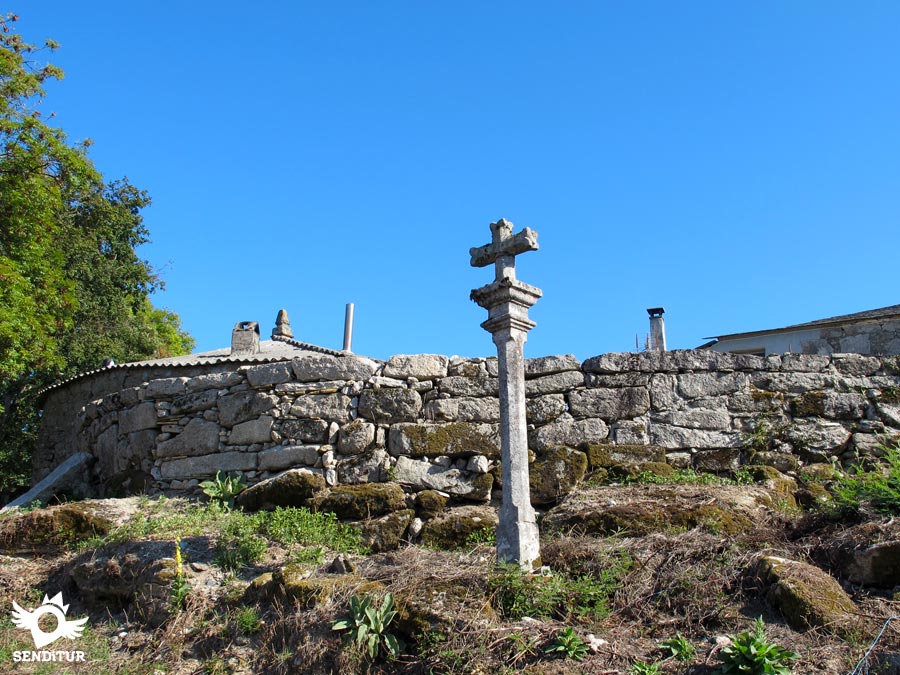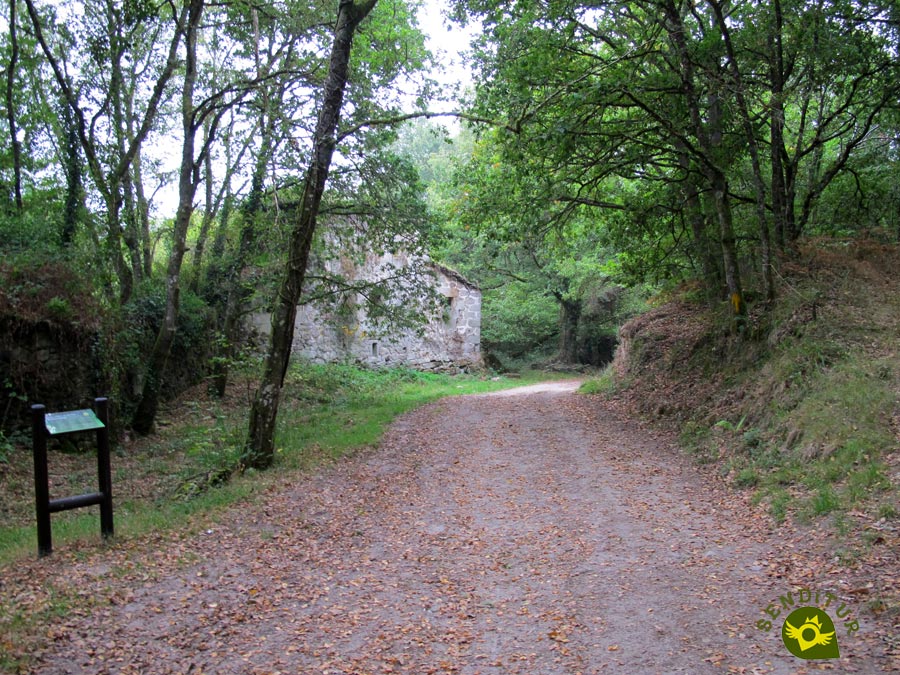In the parish of its own name, between oaks and chestnut trees; Nadela and Vilar de Cas, from the parish of Moreira, and Soutomerille in the parish of San Salvador de Soutomerille, belong to the council of Castroverde, located to the west of the same and all of them being passages of the Primitive Way. The history of these places goes hand in hand with the history of the area in which they are located, the history of the municipality of which they form part, and the history of nearby Lugo. Megalithic remains, castros... speak of population settlements already in antiquity. Souto de Torres cannot have a name that better names it; Souto, referring to the forests on the banks of the rivers, and on the other hand Torres possibly to defences, castros or even to the fortresses that the feudal lords of the Middle Ages possessed for better control of the territory and its vassals. References to the Moreira parish, of which Nadela and Vilar de Cas are part, are already written in 1196 when Countess Doña Sancha founded a monastery of nuns of the Cistercian Order. The now uninhabited Soutomerille is mentioned at the beginning of the 13th century, although there are indications to think that in writings from 897 in which Alfonso III grants privileges to the church of Lugo, in which reference is made to San Salvador de Ramilani, Romean, alludes to Soutomerille. This place, once an important population centre with a monastery and stately homes, belonged to the López-Pallín family in 1627.

Visiting the beautiful village of Souto de Torres you can admire the parish church dedicated to San Tomé, of Romanesque origin, which preserves inside a Neo-Gothic altarpiece and some 17th century carvings of San Pedro and San Antón. In front of it, the field of the church, where the pilgrimage of Os Milagres is celebrated, has a cross that was donated by the parish priest Sabino Seijas in 1919, in which under the Christ and the Sorrowful is represented the Apostle Santiago with a pilgrim habit. Nadela is a village of good dairy farms among extensive pastures and corn fields. Between Nadela and Vilar de Cas, in the middle of the primitive Jacobean route, there is a stone cross, not the typical cross, in which his right arm points to Nadela and his left arm points to Vilar de Cas. This village has the typical and well-kept rural constructions of the area. From Vilar de Cas a bucolic and magical walk through the forest brings the curious visitor closer to Soutomerille, where its ruined houses and its pre-Romanesque church speak of an important past full of splendour.

On this road is a large chestnut tree, old and venerable, a true natural monument of 350 years and that gives name to the place, the Castiñeiro da Corredoira, soon you reach a mansion in ruins, is the old case-fortress of Monfortino among whose remains you can still guess stairs, rooms and the facade panel that remains intuits that it was itself the tower of the fortress. The church of San Salvador de Soutomerille, located next to the old rectory, although reformed in the seventeenth century, retains its pre-Romanesque origins a small window of Mozarabic construction. A Latin inscription underlines its antiquity: "SIT Qvam ANTIQVA / pencil ECCLESIA IN / Fair TESTATVR", the lower stone testifies how old the church was. Continuing the walk, very close, is the castro A Croa de Soutomerille and what is said to be the smallest cemetery in Galicia. When you leave the place gives the sensation of having been observed for years of history or maybe it has been the meigas?

Souto de Torres celebrates Nuestra Señora de los Milagros on May 24, July 25, as in the rest of the council, is celebrated the feast of Santiago Apóstol.
In the field of the church of Souto de Torres is celebrated, on May 24 when celebrating Our Lady of Miracles, a traditional pilgrimage in which a large group of people come on pilgrimage, and this do both the day of the feast itself and during the previous nine days in which officiates a novena in honor of the Virgin.
Between Souto de Torres and Vilar de Cas, in the annals of the year 1534 of the Way that goes to Lugo the Mesón de Fraiás is mentioned, locating it in the place today called de Pipe.

It is said that in other times the pilgrims in Soutomerille had seven homes, one of them was the Tower House of Arriba, where there was prison and for the greater penalties rope and knife.
From the LU-530 road that joins Lugo with Castroverde there is a road that leads to Souto de Torres, Nadela and Vilar de Cas. From Vilar de Cas an unpaved track leads to Soutomerille.
In addition to the Lugo bus station, the bus stop, which covers the Lugo-Fonsagrada line, closest to these villages is Castroverde. For further information the telephone number is 982 222 900.
The nearest train station is Lugo.
Souto de Torres
Nadela
Vilar de Cas
Soutomerille
SENDITUR is not responsible for any variation in the information described, as well as for the misuse of its guides and recommends that everyone be responsible and prudent in carrying out the activity. Likewise, we invite you to document yourself with books and specialized guides to complement the information described. From the commitment of SENDITUR with Nature and the respect to the balance of the environment, SENDITUR urges you to travel in a responsible way, with low environmental impact and respecting at all times the Natural, Cultural and Social environment wherever you go. For any suggestion, SENDITUR invites you to send an email to
Continue watching …